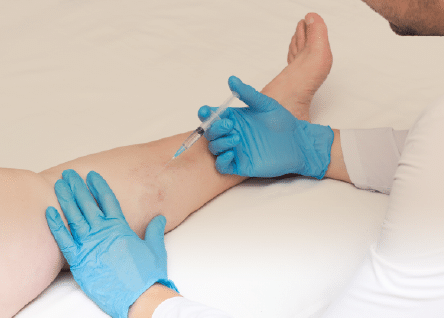Many people throughout their life will deal with circulation issues, leg pain, and general discomfort that keeps them from participating in everyday activities.
Often, these symptoms point to a variety of other conditions, but sometimes, this combination of complaints will lead doctors to diagnose their patients with a condition known as chronic venous insufficiency.
This condition causes discomfort or pain in the legs, discoloration, swelling, and a variety of other issues due to issues with the venous walls in the legs. There are many treatments for this condition that range from mild, at-home remedies to surgical solutions. One of the most common treatments is one known as Varithena foam sclerotherapy.
But what is Varithena foam sclerotherapy, and further, how does it work? This guide will dive into some of the basic information everyone should know about Varithena foam sclerotherapy.

What is Varithena Foam Sclerotherapy?
Varithena foam sclerotherapy is, unlike other treatment options, a minimally invasive and non-surgical solution for chronic venous insufficiency. Varithena is a gentle, microfoam that’s injected directly into a vein.
This treatment requires no incisions, no surgeries, and no general anesthesia–in other words; it only takes a few properly administered needle sticks with the appropriate microfoam to not just eliminate the look of bulging, varicose veins, or swollen veins, but it can also remedy pain, discomfort, and swelling, too.
Varithena is a specific brand of microfoam and differs slightly from other sclerotherapy foams as it’s designed to treat larger, more severe cases.
How Does Varithena Foam Sclerotherapy Work?
Because this treatment is so minimally invasive, it likely only will take a healthcare provider up to one hour to treat a patient, depending on the severity of the case. When the microfoam is injected into the appropriate site, the foam will treat the vein wall, causing it to collapse and seal.
Once that vein wall is collapsed, sealed, and out of the picture, blood flow will automatically redirect to a patient’s healthier veins. This helps with circulation, diminishes or eliminates the size of the bulging vein, and often treats the pain and discomfort of chronic venous insufficiency at the source.
Ultimately, patients are able to go back to their normal lives relatively quickly. Most heavy exercises should be avoided for a week or so, but this procedure is so minimally invasive patients can typically proceed with their routines as they normally would. Though there are few side effects for this treatment, patients might experience minor symptoms like bruising, swelling, or redness near the injection site of the microfoam.
Are you unsure if Varithena Foam Sclerotherapy is the right treatment for you? Consult with your doctor to learn more about chronic venous insufficiency, foam sclerotherapy, and what treatment options would best fit your specific condition to improve the quality of your life.